|
A few weeks ago I received a private message from a follower on Instagram asking me where she could find my project-based learning resource, "Plan a Trip Around the World". I knew that she homeschooled her preschooler. This particular TpT resource, like all of my resources, is geared toward high schoolers.
2 Comments
If you follow my blog you know my philosophy by now. Every topic I discuss here from student-directed learning to learning through travel leads back to one goal - that all of my students have a passion for learning. My dream as an educator is that all learners LOVE to learn. Janie Scheffer is on that mission with her own students, to ignite a passion for reading and writing specifically. She does this with conferring. Check it out.  Janie is a former classroom teacher and current freelance writer in Minnesota. She has taught in various classrooms K-12. Her love for all things reading and writing encouraged her to pursue a master’s degree in literacy. When she is not reading or writing, you can find her sipping coffee, enjoying the outdoors with her husband, or taking her sweet puppy Mabel Jo for a walk. Conferring Creates Conversation, Collaboration, and CamaraderieWould you like to better connect with your students as unique readers and writers? Do you feel the demand of state standards and numerical data collection pressing down on your shoulders? Do you wonder how to manage it while still fostering a love for reading and writing within your classroom? You’re not alone. I’ve been there. The summer of 2017 I was grappling with my literacy instruction in my first grade classroom. For three years previous, I had continuously refined my practices and felt as though I had a pretty good grip on my guided reading groups and writer’s workshop. Collectively, mini lessons fueled by learning targets, independent practice at each student’s level, and literacy materials that supported the needs of my students proved to be overall effective. In many ways, my literacy instruction was shaping into what I had imagined – targeted literacy instruction for each student, driven by data collection. Yet, I knew something was missing. Sure, as a class we enjoyed stories together and wrote stories together. We discussed authors that we liked and tried writing like them. But I had to face the harsh reality that most of my energy and focus revolved around helping my students meet the following: 80 words correct per minute benchmark, achieve sufficient comprehension levels, write across the pages in narrative, opinion, and informational formats, and so forth. Data meetings provided beneficial focus and analyzation of each of my readers and writers, propelling me forward in meeting the needs of my students even more. The scale, though, had tipped. My classroom instruction was out of balance. The demands of literacy benchmarks overpowered what I wanted to be the true heartbeat of my literacy classroom: a genuine love for reading and writing. Thankfully, during the summer of 2017 I was approaching my final semester of graduate school and was needing to hone in on a final action research project and paper. My predicament with my literacy instruction provided the answer for my wondering of what to research and pursue. I quickly came across the work of Patrick Allen and Lucy Calkins, experts on literacy conferring. Their books opened up a whole new perspective for me and literally shaped my action research and current literacy instruction: Patrick Allen – Conferring with Readers Lucy Calkins – Conferring with Writers The practice of conferring, I believed, would bring back the JOY of reading and writing in my classroom, through human connection. At the basis of conferring, a teacher sits with one student at a time during reader’s and writer’s workshop to engage in a student led conversation about the student’s reading or writing. Patrick Allen states: “Sitting next to a child while you confer guarantees that those few minutes will begin and end with the child.” This resonated with me immediately. I wanted my interactions regarding literacy with my students to revolve around them, NOT how they measured up against certain benchmarks. I was over the moon to find out how systematic conferring is. Raise your hand if you’re a type A personality like me? Most teachers are, let’s be honest! Systematic, in that the teacher plans these short student led conversations weekly, and so conferring becomes a routine for the teacher and the students. Even more, because this is a systematic practice, conferring becomes a powerful tool within a classroom community. Lucy Calkins argues: “Conferring can give us the force that makes our minilessons and curriculum development and assessment and everything else more powerful. It gives us an endless resource of teacher wisdom, an endless source of accountability, a system of checks and balances. And, it gives us laughter and human connection – the understanding of our children that gives spirit to our teaching.” BINGO. Human connection and spirit to my teaching was lacking as I solely chased numerical data. I knew I had to give this conferring a fair shake. As the new school year approached, I excitedly planned for my conferring action research in my first grade classroom. The following was my initial focus for implementation:
Human connection paved the way for authentic learning and growing. Through conversation, collaboration, and camaraderie, I was able to connect more meaningfully with my students than ever before. It didn’t take long before a simple “What are you reading/writing today?” sparked the 5-10 minute conference. As the teacher, I was careful to ensure that the student’s voice commanded each conversation. And, I’ll be honest, this was easier with some students than others. But what I found was patience and allowing ‘think time’ communicated to the student that I’m not pushing, this is not a high-stress situation, and I’m here whenever the student is ready. For a few of my students, it took until December for them to embrace conferring, especially leading the conversation. With my more reluctant learners, the collaboration aspect of conferring was key. Again, driven by casual conversation, conferring should be a low-risk situation for all students. Therefore, when I talked about conferring with my students, I presented myself as the ‘coach’ coming alongside them. Often, I’d say things like “We are a team when we confer!” just so that the idea that I’m an evaluator within the conference diminished. And finally, camaraderie was established. By spring of 2018, there was a level of trust and rapport with each of my students that I had never achieved before. With camaraderie, our 5-10 minute conversations evolved into deeper learning. Students were choosing to share with me incredible nuggets of information that got at the heart of why they were the readers/writers and even humans that they were. While getting a clear understanding of who they were as readers and writers, I also got glimpses into their hearts as humans. Priceless. Which brings me to my last point… data collection. It took me a while to determine my data collection methods during conferring. And truthfully, I was overwhelmed to think about another collection of data. But all those incredible nuggets of information practically wrote themselves down, as important as they were, I found that data collection was easy – yes EASY! – because it didn’t revolve around numerical data or word lists or timed tests. In fact, I came up with a simple electronic record on my iPad that allowed me to quickly type up the data at the closing of each reading/writing conference. See below for a snapshot of it: Reading Conference: Reading Conference: Writing Conference: The overarching theme of my conferring data was the reading and writing behaviors of my students. In other words, I now had a living document of what my students DO as readers and writers. Knowing their habits, their strengths and areas for improvement, and their processing/thinking while reading and writing was so beneficial. In reviewing my data collection, I was able to provide one TP (teaching point) for individualized instruction for each conference. Often, the TP would align with the reading/writing learning target of that day or week, but not always. And that is the true advantage of conferring; there is flexibility and opportunity for you as the teacher to determine what’s important for the student you are sitting alongside on that particular day.
I’m going to leave you with words from Patrick Allen that I can confirm are true: “Coming to know conferring has been a journey, but when you spend time and intention on an instructional practice, the benefits are well worth the effort.” If you’re feeling stuck, weighed down, and ready for the LOVE of reading and writing to ignite within your classroom, I’d say start with conferring. Don’t just dabble, commit. It will prove to be worthy of your time and your students' time. It is NOT 'just another thing to do' on our never ending ‘To Do’ lists as teachers. YOU CAN DO IT. Happy conferring! Contact me! [email protected] linkedin.com/in/janie-scheffer-589906189 |
Blog IntentTo provide innovative educational resources for educators, parents, and students, that go beyond lecture and worksheets. AuthorSara Segar, experiential life-science educator and advisor, curriculum writer, and mother of two. Categories
All
|
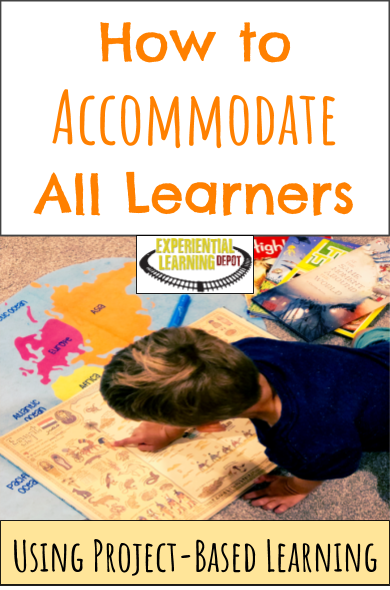
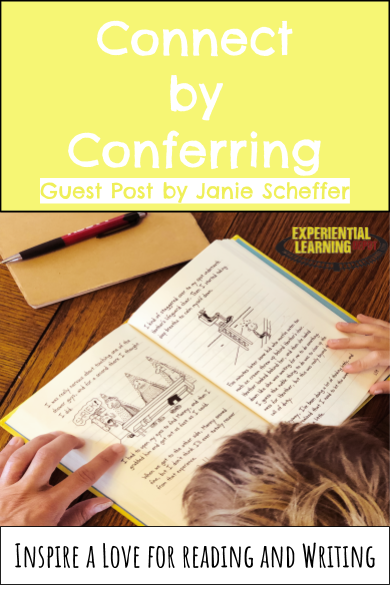
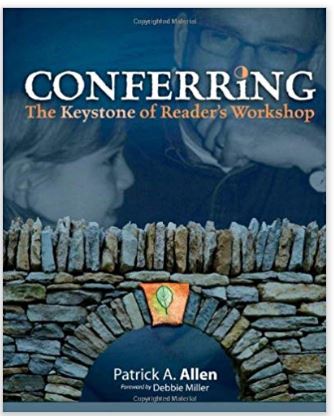
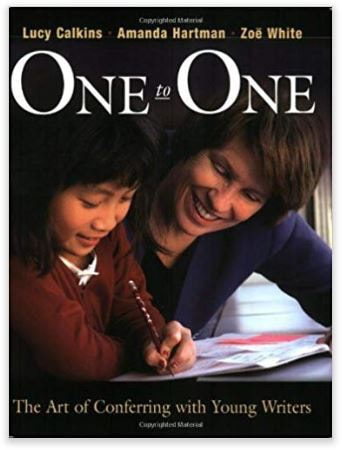

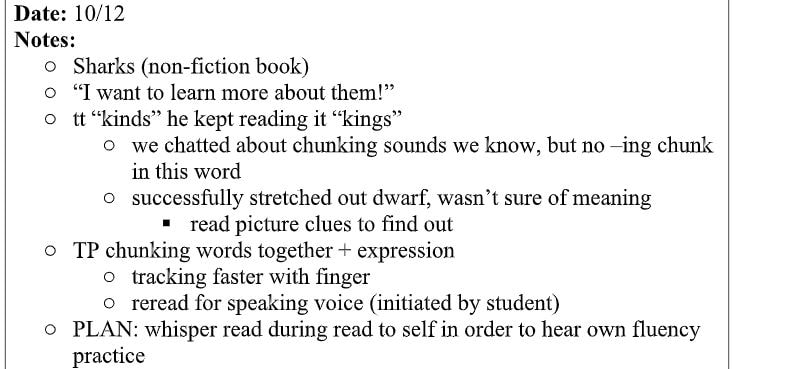

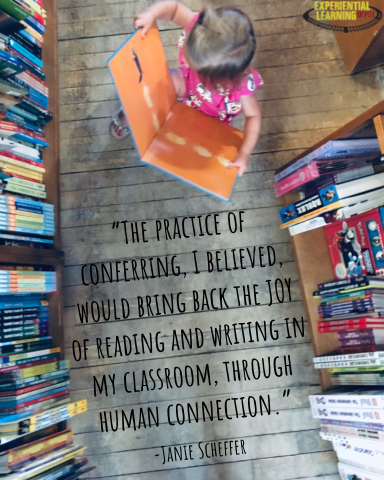


 RSS Feed
RSS Feed